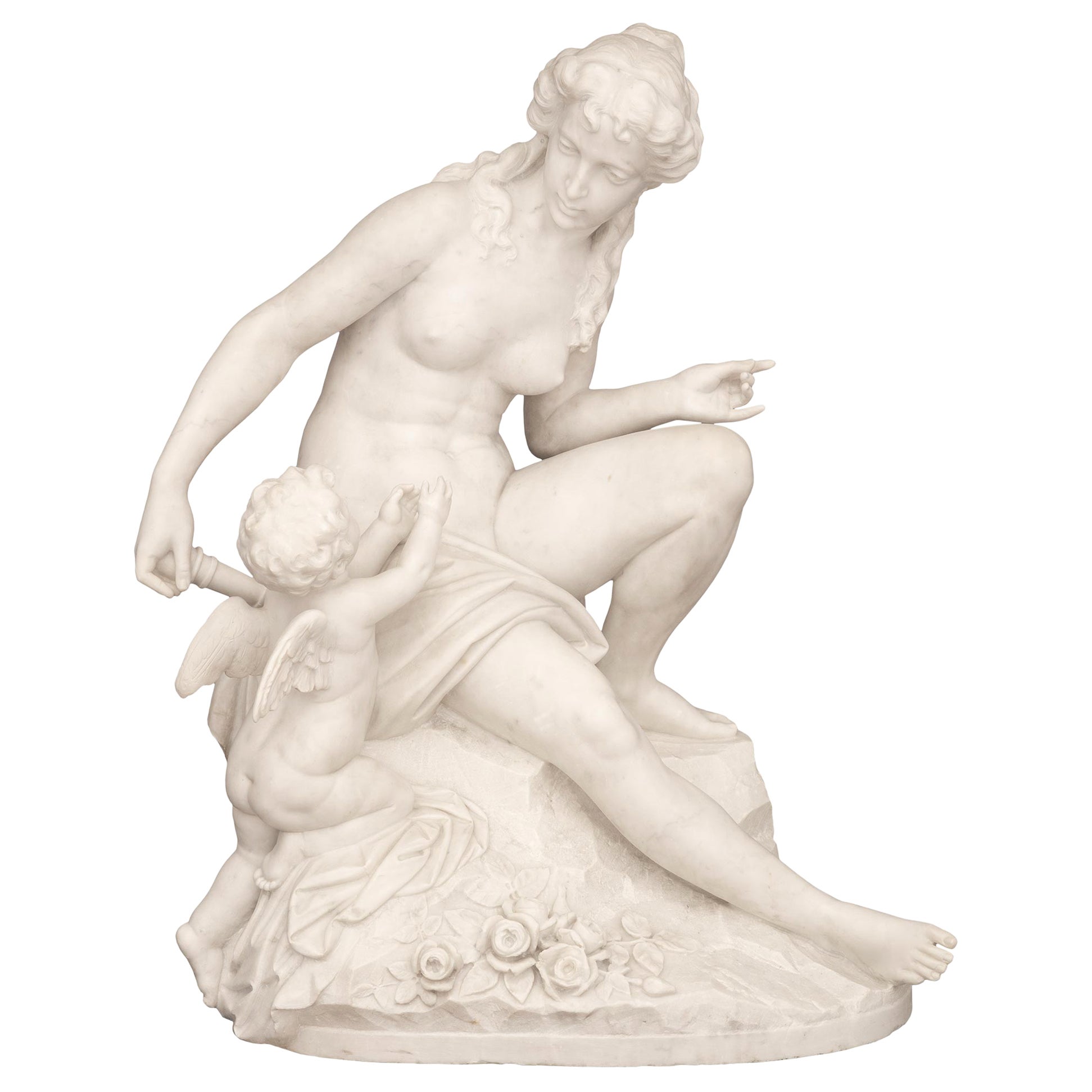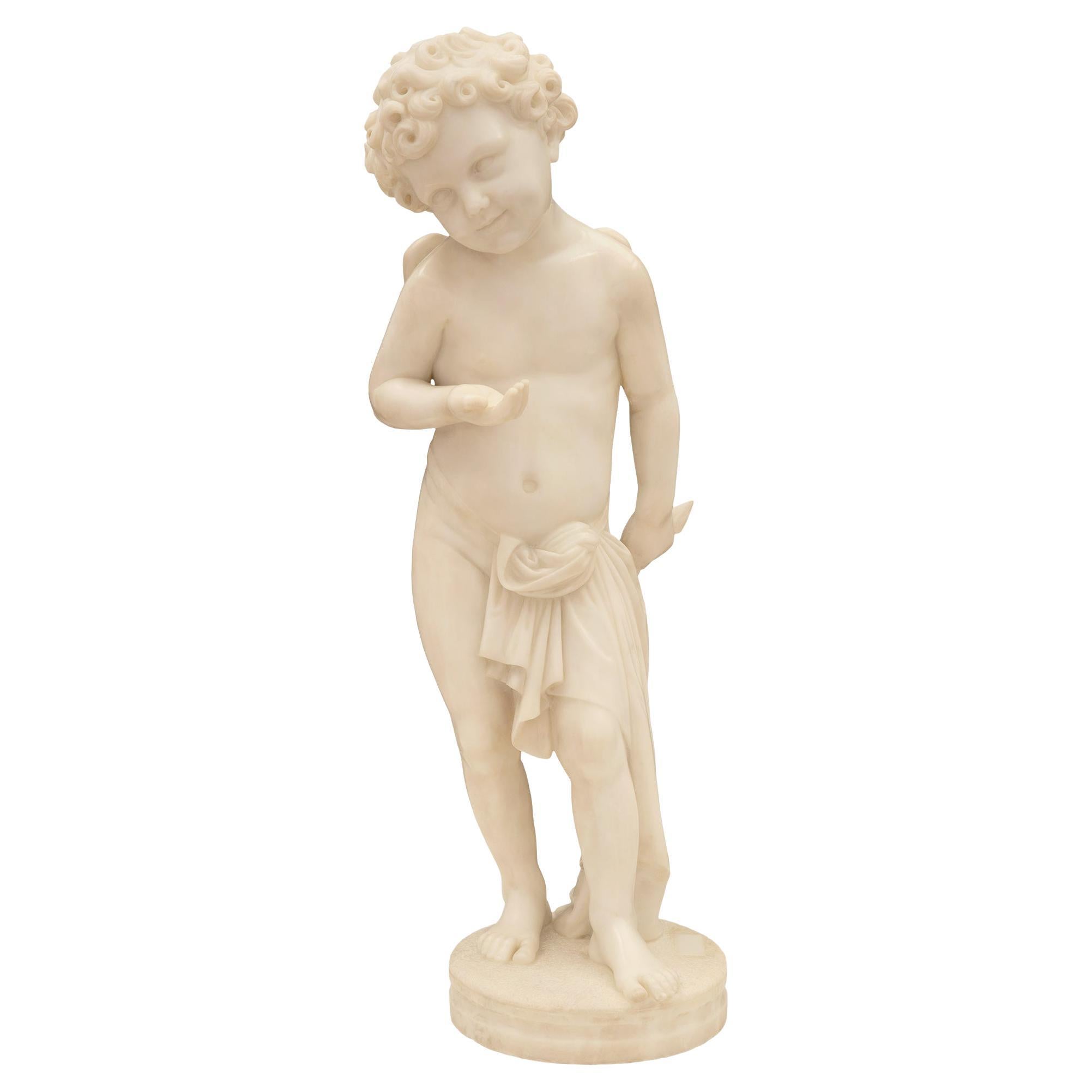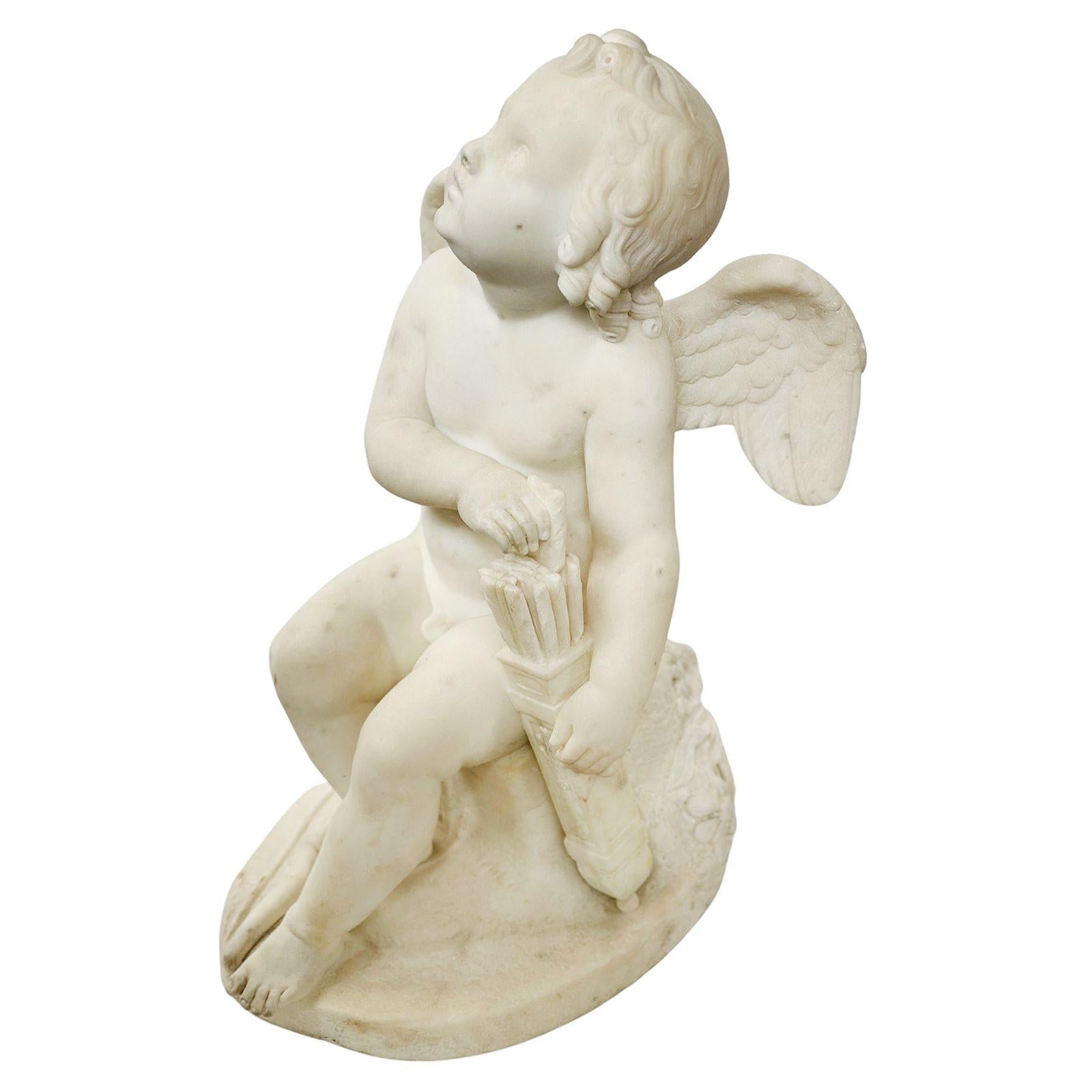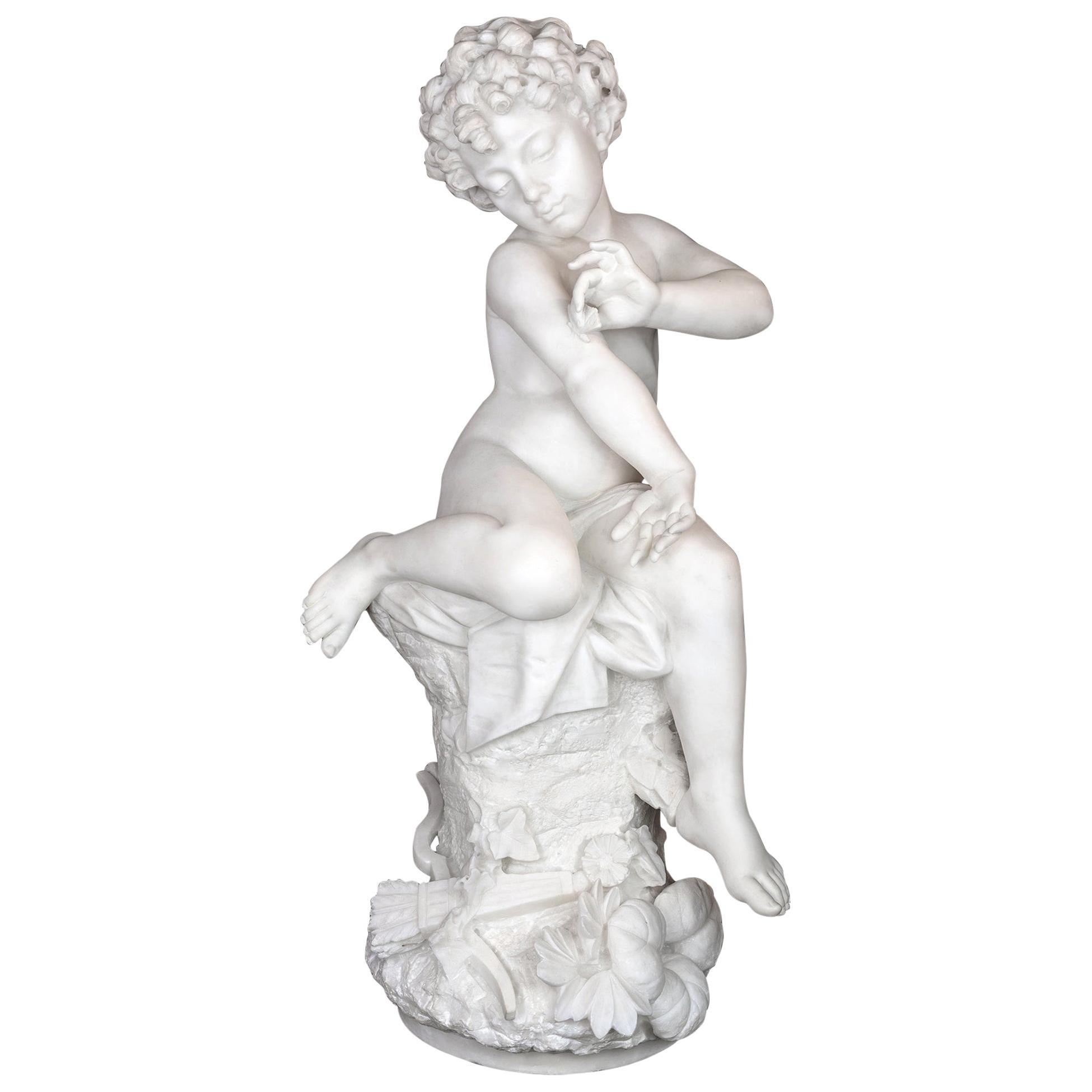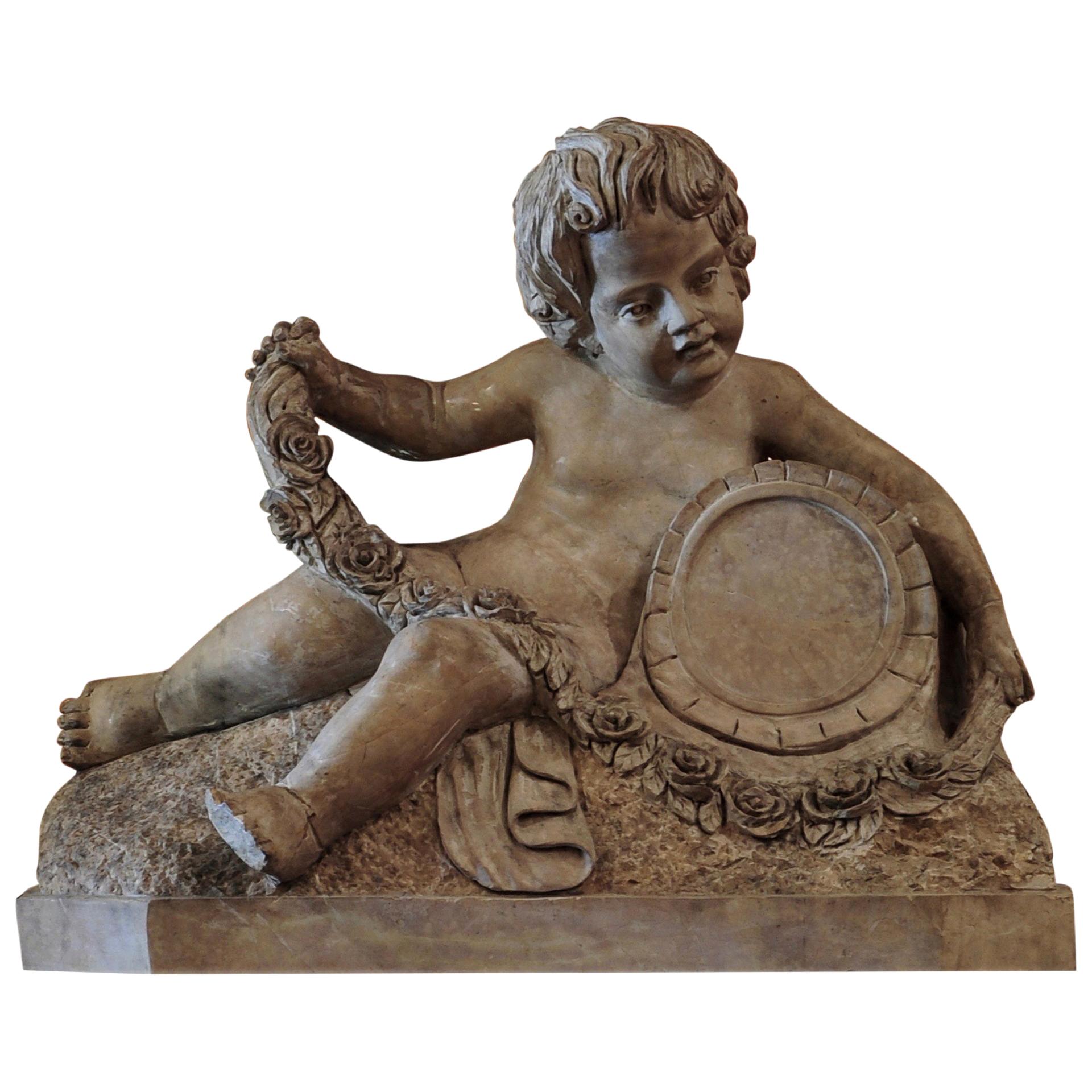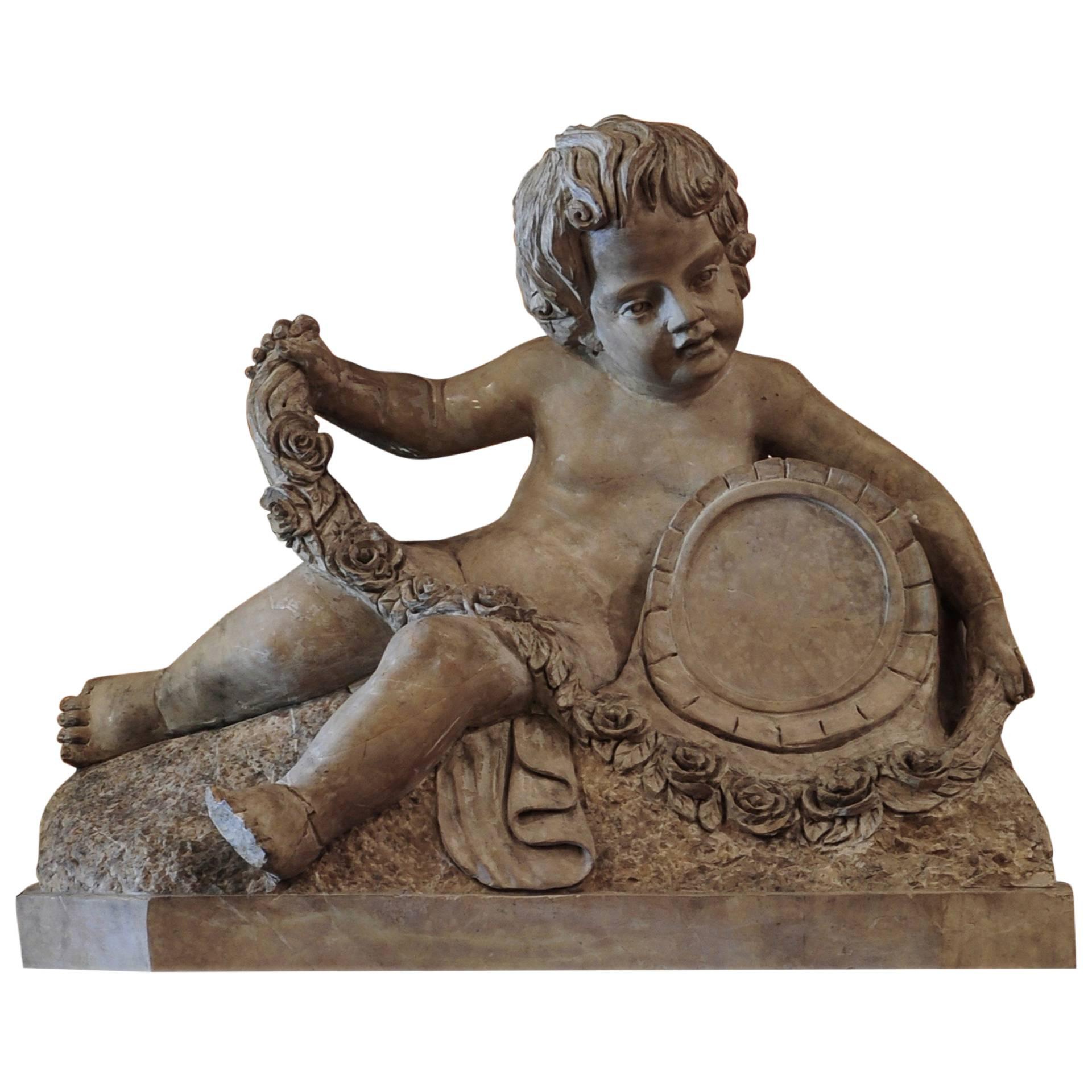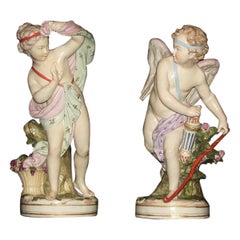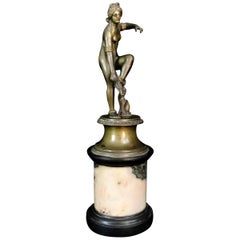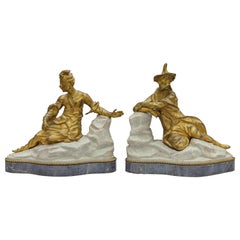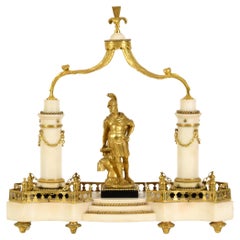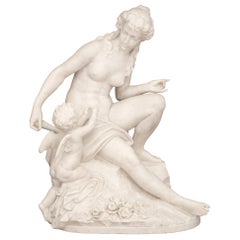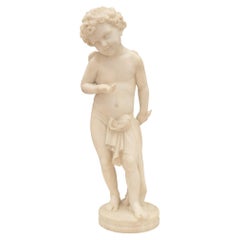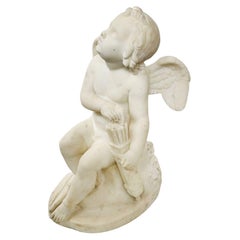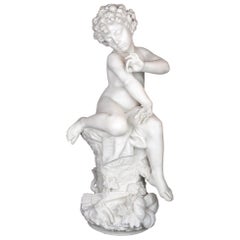Items Similar to 19th Century, Italian White Marble Sculpture by Pompeo Marchesi with Cupid, 1840
Want more images or videos?
Request additional images or videos from the seller
1 of 21
19th Century, Italian White Marble Sculpture by Pompeo Marchesi with Cupid, 1840
$14,976.79
£11,149.25
€12,500
CA$20,514.46
A$22,816.56
CHF 11,914.10
MX$277,653.30
NOK 152,161.24
SEK 142,700.40
DKK 95,158.14
Shipping
Retrieving quote...The 1stDibs Promise:
Authenticity Guarantee,
Money-Back Guarantee,
24-Hour Cancellation
About the Item
19th century, Italian white marble sculpture by Pompeo Marchesi with cupid, Italy, 1840
This valuable sculpture, made in white marble in 1840, is a work signed by Pompeo Marchesi.
It represents a cupid who writes. The cupid is the mythological personification of the god Love, depicted in poetry and art with the appearance of a child, mostly naked and winged. In this work appears lying prone on a soft drapery from which comes out a redundant composition of flowers. The cupid turns or looks forward to if lifting on his left arm; with his right hand he is intent on writing on a parchment. The feet, slightly raised, recall the childish attitude and contribute to give movement to the figure.
The work is representative of the romantic artistic expression of the famous Italian sculptor Pompeo Marchesi. Pompeo, son of Gerolamo Marchesi and Caterina Tamburini, was born in Saltrio (near Varese) on 7 August 1783. After a first training at the Brera Academy in Milan, he perfected in Rome under the guidance of Antonio Canova. Returning to Milan in 1810, Marchesi started the long activity for the construction of the cathedral, marking the beginning of an extraordinarily intense career. He won numerous awards, participated in the annual exhibitions of Brera, was very active in the decoration of large works of Urban Furniture including the Arco del Sempione in Milan and the Cathedral of Como. With the Restoration, Marquesas acquired considerable credit and soon became one of the leading interpreters of the Habsburg court, establishing himself internationally.
Appointed “Imperial regio statuario di corte” in 1838, thanks to the offices of F. von Hartig, Governor of Lombardy, Marquises obtained directly from the Emperor Ferdinand I the commission of the monument for the Vienna Hofburg.
The retirement from the Brera Academy in 1852 coincided with the beginning of the descending parable of the artist, who Stendhal had defined in the Certosa di Parma (1839) the "fashionable sculptor" of Lombardy. Marchesi died in Milan on 7 February 1858.
- Dimensions:Height: 10.63 in (27 cm)Width: 16.54 in (42 cm)Depth: 6.7 in (17 cm)
- Style:Romantic (Of the Period)
- Materials and Techniques:
- Place of Origin:
- Period:
- Date of Manufacture:1840
- Condition:
- Seller Location:IT
- Reference Number:1stDibs: LU4405218783172
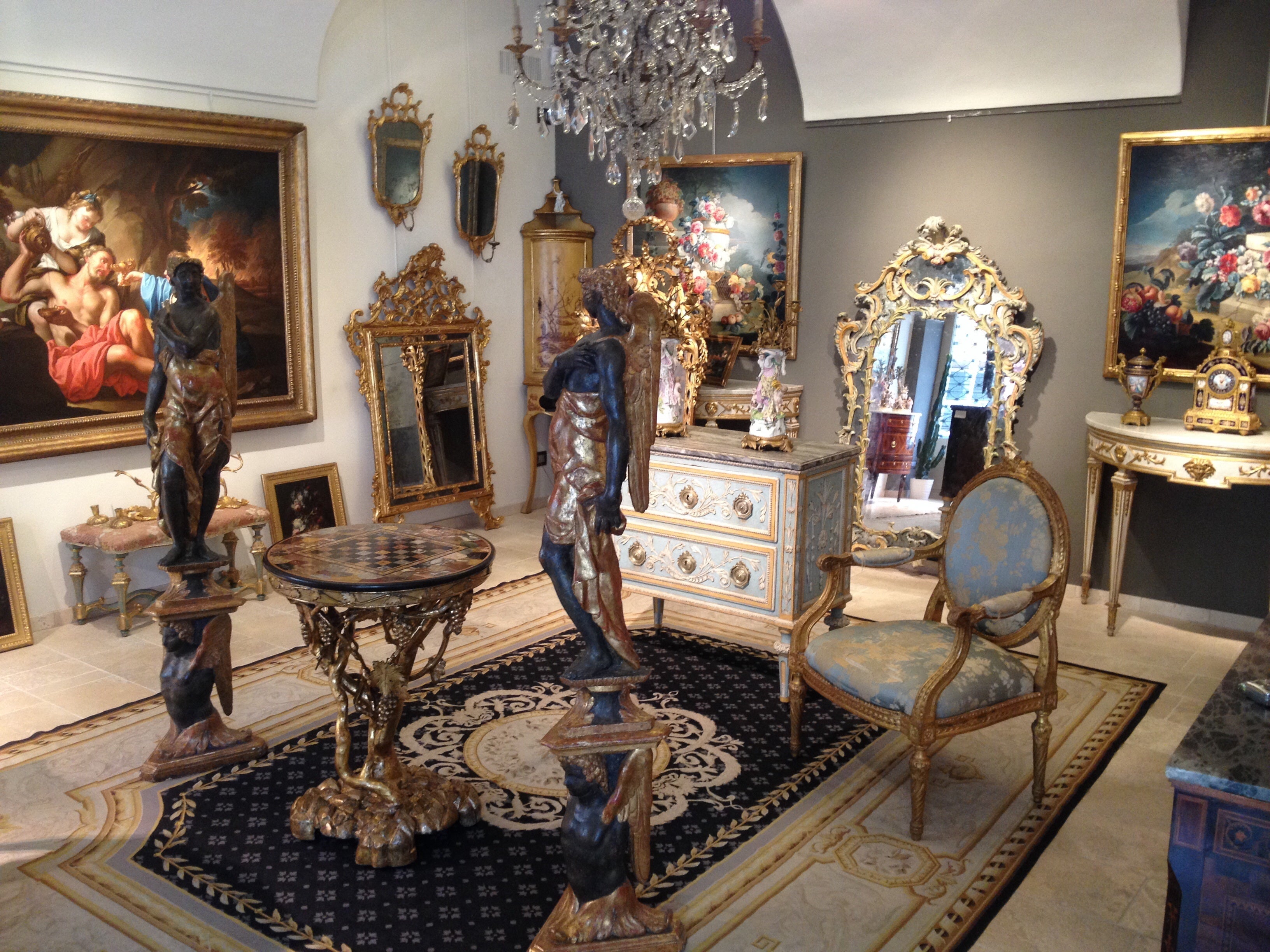
About the Seller
5.0
Platinum Seller
Premium sellers with a 4.7+ rating and 24-hour response times
Established in 1980
1stDibs seller since 2019
56 sales on 1stDibs
Typical response time: 1 hour
- ShippingRetrieving quote...Shipping from: Italy
- Return Policy
Authenticity Guarantee
In the unlikely event there’s an issue with an item’s authenticity, contact us within 1 year for a full refund. DetailsMoney-Back Guarantee
If your item is not as described, is damaged in transit, or does not arrive, contact us within 7 days for a full refund. Details24-Hour Cancellation
You have a 24-hour grace period in which to reconsider your purchase, with no questions asked.Vetted Professional Sellers
Our world-class sellers must adhere to strict standards for service and quality, maintaining the integrity of our listings.Price-Match Guarantee
If you find that a seller listed the same item for a lower price elsewhere, we’ll match it.Trusted Global Delivery
Our best-in-class carrier network provides specialized shipping options worldwide, including custom delivery.More From This Seller
View All19th Century, Pair of French Porcelain Sculptures Depicting Cupid and Psyche
Located in IT
19th century, pair of French polychrome porcelain sculptures depicting cupid and psyche
The delicious sculptures, made of hand-painted porcelain in polychrome, in Strasbourg in th...
Category
Antique 19th Century French Baroque Porcelain
Materials
Porcelain
18th Century, Italian Bronze Sculpture with Venus Removing Her Sandal
Located in IT
18th Century, Italian Bronze Sculpture with Venus Removing Her Sandal
This bronze sculpture represents Venus as she takes off her sandal. Made in the neoclassical era in Italy, it consists of the bronze sculpture of the Greek goddess Aphrodite, Venus for the Romans. The naked goddess, getting ready for the bath, makes the very human gesture of loosing a sandal.
The left arm is raised, as if to compensate the position while maintaining the balance. Next to her, wrapped around a rocky spur, is a dolphin, an animal iconographically linked to the goddess because of his birth from the foam of the sea. The figure rests on a cylindrical and concave bronze base, with finely chiselled reserves. The bronze element is in turn resting on a africano marble cylinder with black of Belgium marble base.
Venus is one of the major Roman goddesses primarily associated with eros and beauty. It is traditionally understood as the equivalent of the Greek goddess Aphrodite, goddess of beauty, physical and passionate love, among the major deities of Olympus. His birth is due to a dramatic event: Uranus, Heaven, is mutilated by his son Cronus, who punishes him for the wrongs inflicted on his mother. The torn limbs of Uranus fall into the sea and fertilize the foam of the waves of the island of Cyprus. From the waves emerges in all its splendor Aphrodite. Since the 4th century, Aphrodite begins to be represented with characters more human and less heroic. Praxiteles with the 'Aphrodite Cnidia,' for the first time in the history of sculpture, depicts her naked, as she prepares to take a ritual bath.
From the Pressitele’s model descend the Capitoline Venus (Capitoline Museums of Rome) and the Venus de’ Medici (Uffizi Museum of Florence) accompanied by Eros on the back of a dolphin.
This vein also includes a subject frequently attested in the Hellenistic and then Roman Ages, with examples in bronze, marble and terracotta: the Aphrodite who fastens the sandal.
The luck that this type of representation had in the following centuries is demonstrated by the vast number of sculptures that represent it. In this bronze work the goddess resumes the position of Oplontis’s Naked Venus: here Venus holds an apple in her left hand, a reminder of her victory in the beauty contest in which she prevailed over Minerva and Juno by judgment of Paris. In our bronze instead, the hand seems to want to shake the apple, which however has not been molded. Perhaps the bronze is inspired by another work, such as the bronzes kept in the archaeological museum of Padua. Another example is the famous 'Venus in bikini" found in Pompeii, so-called because it depicts the goddess in the same pose, but with the breasts and hips covered by bands painted in gold.
The dolphin depicted next to it could be inspired instead to the Medici Venus...
Category
Antique Late 18th Century Italian Neoclassical Figurative Sculptures
Materials
Marble, Belgian Black Marble, Bronze
18th Century Pair of French Gilt Bronze Sculptures on Marble Base
Located in IT
18th century pair of french gilt bronze sculptures on marble base representing Chinese figures
This particular and lovely pair of sculp...
Category
Antique Mid-18th Century French Louis XV Figurative Sculptures
Materials
Marble, Bronze
19th Century, French Marble and Gilt Bronze Centerpiece
Located in IT
19th Century, French Marble and Gilt Bronze Centerpiece
This particular centerpiece was made, in white marble and finely chiseled gilded bronze, in France between the end of the eigh...
Category
Antique 19th Century French Louis XVI Figurative Sculptures
Materials
Marble, Bronze
19th Century, French Terracotta Bust and Marble base with Noblewoman
Located in IT
Terracotta bust depicting noblewoman, marble base, 19th century, France
The refined bust, made of terracotta, depicts a noblewoman dressed according to the fashion of the mid-eighte...
Category
Antique 19th Century French Louis XV Busts
Materials
Terracotta
19th Century, French Terracotta Bust and Marble Base with Nobleman
Located in IT
Terracotta bust depicting nobleman, marble base, 19th century, France
The refined bust depicts a nobleman dressed according to the fashion of the mid-eighteenth century in France. T...
Category
Antique 19th Century French Louis XV Busts
Materials
Terracotta
You May Also Like
Italian 19th Century White Carrara Marble Statue of a Venus and Cupid
Located in West Palm Beach, FL
A charming and large scaled Italian 19th century white Carrara marble statue of a Venus and Cupid. The young Venus is seated on a rock with a flowing garment draped over her leg whil...
Category
Antique 19th Century Italian Figurative Sculptures
Materials
Marble
Italian 19th Century White Carrara Marble Statue of Young Cupid
Located in West Palm Beach, FL
A most charming and finely detailed Italian 19th century white Carrara marble statue of young cupid. The statue is raised by a circular base with a fine wrap around mottled design. T...
Category
Antique 19th Century Italian Figurative Sculptures
Materials
Carrara Marble
Late 19th Century Italian Carved Marble Cupid Sculpture
Located in Los Angeles, CA
Adorable white marble carved sculpture of cupid made in Italy in the late 19th Century; he appears to have a set of arrows by his side and is gracefully looking up at the sky.
Dimens...
Category
Antique Late 19th Century Italian Figurative Sculptures
Materials
Marble
Alabaster Sculpture Statue of Cupid
By William-Adolphe Bouguereau
Located in New York, NY
A fine quality alabaster sculpture of cupid with a butterfly.
Nude figure of cupid with a butterfly, sitting on a rock, his bow and arrow on the ground with the flowers.
Artist: After William Adolphe Bouguereau...
Category
Antique Late 19th Century French Figurative Sculptures
Materials
Carrara Marble
18th Century Sculpted Verona Marble Putto
Located in Vosselaar, BE
Depictions of young angelic boys are also known as putti, or putto for a single one. Since the 17th century on they remained popular and are found in various forms. Perhaps the most known version is Cupid. Looking at their attributes time periods can be narrowed down. In this example we see a rose Guirlande and a medaillon which are typical for the late 18th-early 19th century. The Rosso Verona Marble...
Category
Antique Late 18th Century Italian Neoclassical Figurative Sculptures
Materials
Marble
18th Century Sculpted Verona Marble Putto
Located in Vosselaar, BE
Depictions of young angelic boys are also known as putti, or putto for a single one. Since the 17th century on they remained popular and are found in various forms. Perhaps the most known version is Cupid. Looking at their attributes time periods can be narrowed down. In this example we see a rose Guirlande and a medaillon which are typical for the late 18th- early 19th century. The Rosso Verona Marble...
Category
Antique Late 18th Century Italian Neoclassical Figurative Sculptures
Materials
Marble
More Ways To Browse
Italian Antique White Marble Sculpture
Marble Flower Sculpture
Marble Feet Sculpture
Child Sculpture Marble
Cupid Sculpture
Italian Hand Carved White Marble Sculpture
Marble Cupid
Cupid Figure
Carved Cupid
Marble Sculpture Of A Child
Carved Marble Figure Of Child
Austrian Bronze Sculpture
Ancient Roman Marble
Second Empire Furniture
White Carrara Marble Sculptures
Wooden Sculpture Heads
Ceramic Dancer
Antique Putto
